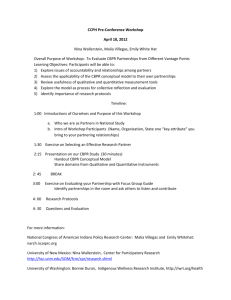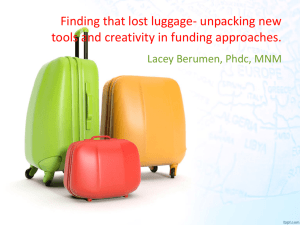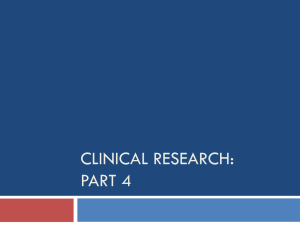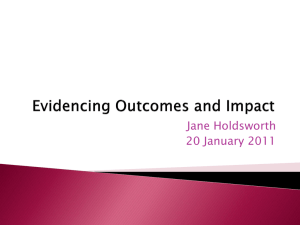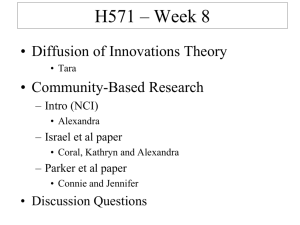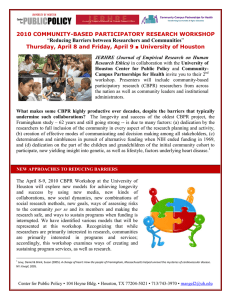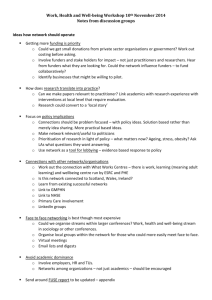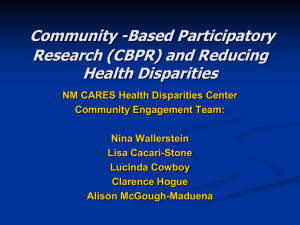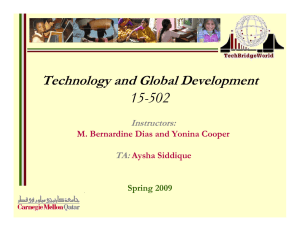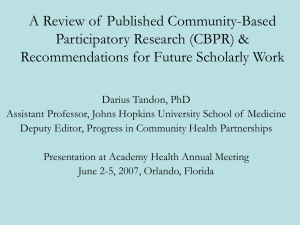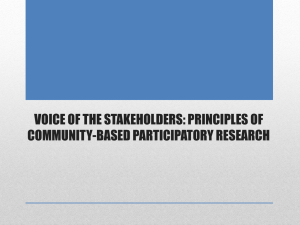Community-based Participatory Research: Practical Tips for the Research Community
advertisement
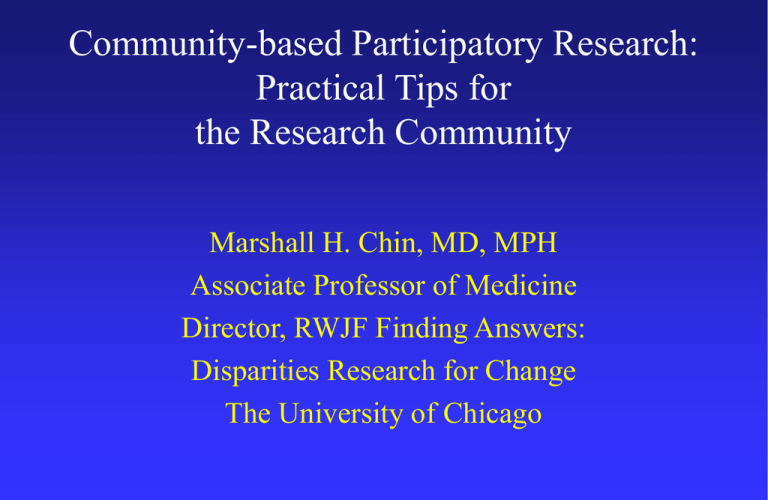
Community-based Participatory Research: Practical Tips for the Research Community Marshall H. Chin, MD, MPH Associate Professor of Medicine Director, RWJF Finding Answers: Disparities Research for Change The University of Chicago Recommendations 1 • • • • Relationship building - longterm Trust – can’t predict everything Honesty, transparency Get to know one another – – – – Visit other’s turf Food/meals – breaking bread Openness, trust beyond technical business relationship Got to like one another Recommendations 2 • Flexibility - working in the real world – Understand legitimate needs of all and be flexible to make it happen – Time constraints & mission of community partners – Academic needs of the researchers – Simple and practical are good Recommendations 3 • Find out who’s willing to play ball – Individuals, tough history – Don’t take rejection personally • • • • Forgive and forget Senior leadership support from the beginning Regular updates to senior management Enlarge the pie – Share the $ - research and service grants Recommendations 4 • Equal partnership – What does this mean? – Goals, needs, skills of partners • Find out what people are good at and interested in – Don’t force square peg in round hole • CBPR as a continuum • Humility – everyone make an effort to learn – Specific expertise but understand general issues of all Recommendations 5 • Institutionalization – Ability to absorb hit of leaders leaving – Written rules vs. flexibility – Structure – when to lead, when to follow, when to facilitate Recommendations 6 • Everyone at table but subcommittees particularly interested do work – Feasibility – get things going • Make sure team has necessary expertise Recommendations 7 • Pilot projects – crawl then run – Small successes nurture spirit – Debug process on manageable scale – Pilot data for larger grant • Study results • Proof of relationship • Proof of debugged process Recommendations 8 • Latch on to existing infrastructure/projects • Diversify portfolio Recommendations 9 • Grantsmanship – Know your competitive advantage and pound on it – – – – Population need Minority populations, Rural/Urban, SES/Literacy Existing model programs Strengths of academic partners • Open CBPR yet structured • Time – meld with grant cycles - flexibility Recommendations 10 • Everyone shares the credit – broadcast small and large successes • Multiple forms of dissemination – community, listserves, websites, newspapers, newsletters, journals, community and academic presentations • Side effects - Employ the community when possible Recommendations 11 • Funders / Agencies / Communities / Researchers Promote a common vision vs. separate agendas – – – – Improve health care of communities and patients Service versus research - role of rigorous evaluation Funders promote collaborations: e.g. joint funding Respect, transparency, feedback and input – But independence, no censorship – Successful partnerships = major impact Bottom Line • • • • • • Fun Chance to do a lot of good Inherently rewarding work Tough balancing - tradeoffs Limited number of pre-existing model programs Seamless partnerships – Research – Translation – Service - Policy
